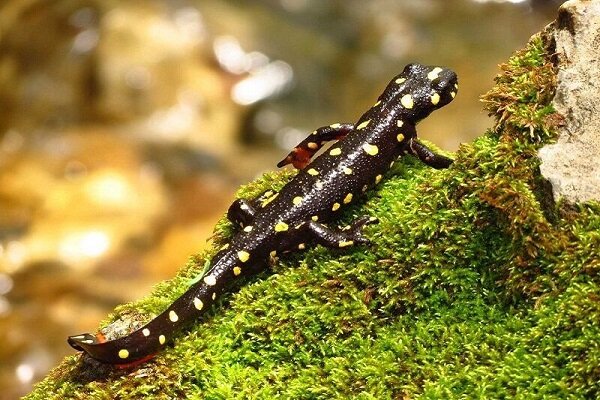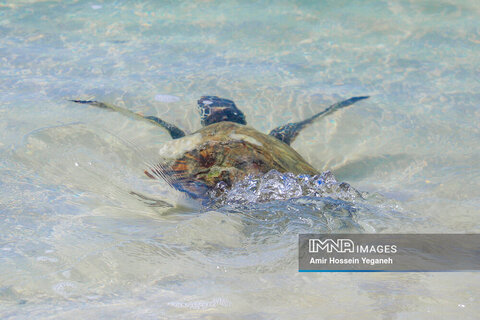Iran (IMNA) - Faraji also discussed other factors that negatively impact the lives of these creatures, such as habitat destruction, water pollution, sewage influx, and toxic exposure. Unfortunately, it is challenging to pinpoint which species are at risk of extinction. However, Faraji mentioned that one such endangered species is the marsh crocodile, which faces this threat due to its limited range, low population, and residence in arid regions.
The Euphrates softshell turtle is another species in grave danger, according to Faraji, who expressed concern about the Vipera ursinii, which is also threatened by unlawful hunting and habitat degradation. In response to these challenges, the Department of Environment (DOE) has been working on protecting habitats and endangered species. For instance, the spider-tailed horned viper was identified as endangered three years ago and included in the Convention on International Trade in Endangered Species of Wild Fauna and Flora (CITES) to foster global conservation efforts.
International Efforts to Safeguard Endangered Species Through CITES and Collaborative Conservation
The Convention on International Trade in Endangered Species of Wild Fauna and Flora (CITES) is a global agreement among governments that aims to regulate and monitor the international trade of wildlife and their products. Established in 1975, CITES seeks to prevent trade from threatening the survival of endangered plants and animals.
Member states have the responsibility to control and prohibit the trade of species listed under CITES, which are categorized into various levels based on their threat levels. Trading level one species is strictly prohibited, with governments only allowed to conduct research on them. Trade for level two and three species is regulated with decreasing sensitivity levels.
The Luristan newt, a captivating salamander native to western Iran and considered the world's most attractive, faced the brink of extinction due to habitat degradation and uncontrolled hunting for both national and international pet markets. The situation worsened during the Iranian New Year celebrations. To counter this, the species was listed under CITES to halt international trade, and domestic trade was controlled with the assistance of the Department of Environment (DOE), resulting in near-zero trade.

Furthermore, Faraji highlighted the restoration of the springs and habitats of these endangered species as a crucial step in their conservation. As per Article 50 of the Constitution, environmental protection is considered a public duty. Consequently, all executive bodies must collaborate with the DOE to preserve and manage endangered species as part of their conservation programs.
The Crucial Role of Environmental Conservation
Iran is home to approximately a thousand animal species, with over 100 of them facing endangerment, as reported by Hassan Akbari, the deputy head of natural environment and biodiversity at the Department of Environment (DOE), in December 2021.
Every year, around 10,000 environmental offenders are apprehended. Some of the endangered species include the Asiatic cheetah, great bustards, Siberian cranes, Persian onagers, and certain reptiles and amphibians. According to Akbari, significant challenges faced by these species are rampant smuggling and habitat destruction.
To promote a greener future and protect wildlife, fostering an environmental kindness culture and encouraging social participation are essential strategies. Akbari also highlighted the issue of easy access to weapons and ammunition for poachers as a risk factor for wildlife populations.
To preserve the diverse ecosystem across Iran, the DOE has designated four types of protected areas: national parks, wildlife refuges, protected areas, and natural national monuments. By 1997, the DOE was responsible for overseeing 7,563,983 hectares of these protected lands.
Expanding Conservation Efforts
The Department of Environment (DOE) now oversees approximately 18.5 million hectares of protected lands, aiming to preserve the diverse ecosystems across Iran.
Iran's unique geographical conditions, climatic variety, and abundant water resources from the Caspian Sea, the Persian Gulf, and the Sea of Oman contribute to its rich biodiversity. To date, around 1,300 vertebrate species (including mammals, birds, reptiles, amphibians, and aquatic fish), 30,000 invertebrate species, and 8,000 plant species have been identified within the country.
Despite these efforts, over the past two decades, human activities have led to significant ecosystem degradation, loss of genetic information, and decline in species and biological capabilities. The rate of biodiversity threats due to human actions has accelerated more in the last 50 years than throughout the entire history of human life.


Your Comment